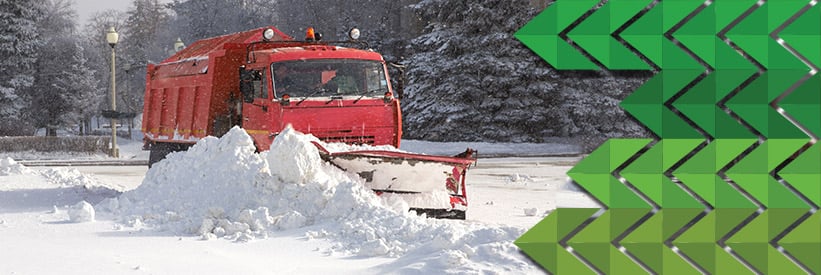As you know, hazardous ice can create many headaches for you in the form of increased insurance, resulting from slip and fall law suits and liabilities.
Although seemingly a boring topic… getting up to speed on de-icing your commercial property will save you in money and avoidable headaches.
Be sure to discuss the following de-icing essentials your snow removal service must employ to insure you tenants and their customers are safe after a frigid winter snow and ice storm.
How Weather Temperatures Impact Ice Melting and Removal
Obviously, and without insulting your intelligence… the hot rays of the sun will increase the rate at which ice melts.
Clearly, heat melts ice, but it’s important to understand; radiant heat will raise the temperature of roads and walkways hirer than the air during the day; conversely, during the night, pavement will be colder than air.
Your snow removal company should know when to use less or more salt and chemicals depending on the time of day and the specific weather conditions at the time.
Lastly, dry snow during blizzard-winds will more than likely blow off the cold road, rather than sticking, as is the case when chemicals are applied; again, in-the-field decisions are necessary and must be made from experience and knowledge.
Different Surface Types React Differently to Heat
Concrete: Interestingly, ice and snow melt quicker at the top level of concrete, because concrete releases heat fast.
Asphalt: Known to absorb more solar radiation than concrete, asphalt can have more heat stored-up and ready to melt snow and ice at a rapid rate.
Regardless of your commercial property’s surface… heat is usually stored up in concrete and asphalt to assist in melting dangerous ice and avoiding hazards for patrons.
Married with the correct de-icing solutions and salt, melting ice completely is a walk in the park.
Topography is an Important Consideration Not to Be Overlooked
Your commercial property’s landscape with regards to hills, shrubbery and foliage influences the formation of hazardous ice, because they typically block the sun.
When an area of your property is shaded for most of the day you can bet ice will form and remain for days or weeks if not tended to correctly. Pavements and walkways in the shade will also have lower temperatures, which mandates more de-icing chemicals and salt.
Not only does shade impact icing… any areas on your property susceptible to snow drifts also impact temperature levels of your parking lots and walkways.
Knowing these simple facts about de-icing your commercial property will insure liability is at a minimum and your tenants are out of harm’s way.
How Cars and Foot Traffic Assist in Melting Ice and Snow
Some snow removal companies will complain about cars and people packing new snow into the pavement… apparently they think this will create more work and lousy conditions.
Here’s the thing; proper application of salt and de-icing chemicals are thoroughly mixed-up into the snow and slush, resulting in more efficient use of these products.
Additionally, when your property is chemically treated and cars drive through your parking lots, and patrons walk on sidewalks it will break up weak ice automatically.
The only variable when it comes to cars, are tire tracks. Depending on time and temperature, snow trapped and then released in the wheel tread can freeze if not treated.
What Your Snow Removal Service Must Know About De-Icing Your Commercial Property
Your snow removal service must be fully versed in how temperature, topography, and traffic impacts ice-melting. Of course this all seems to be common-sense, however most snow removal companies don’t take into account such things.
Lawn Elements snow removal services are built around sound principles of physics and chemistry to offer you a surefire way of safely, reliably and quickly removing hazardous ice from your commercial property.




